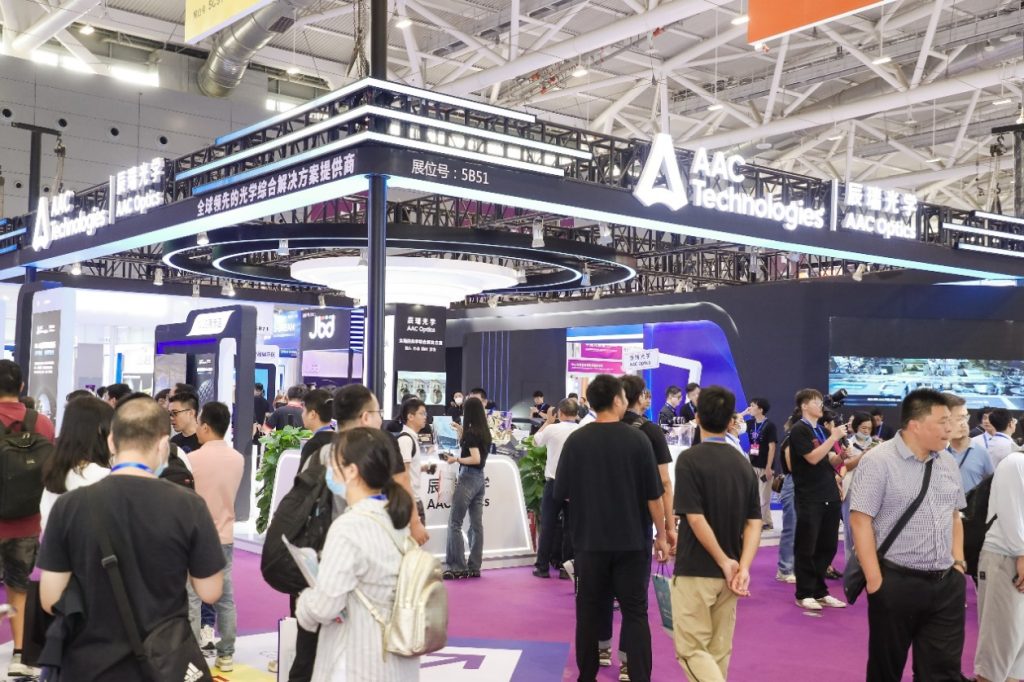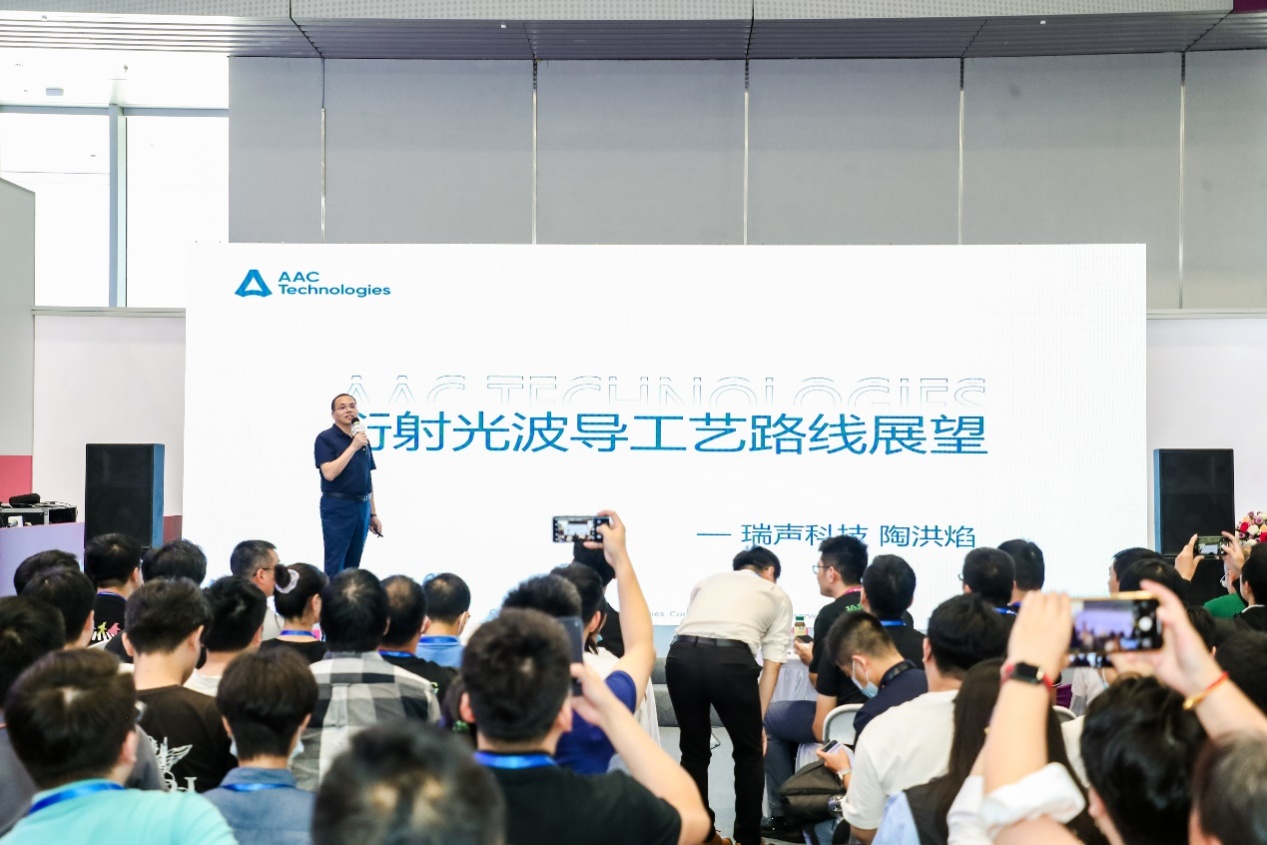On September 6 to 8, 2023, the 24th China International Optoelectronic Exposition (CIOE 2023) was successfully held in the Shenzhen World Exhibition and Convention Center. As a leader in sensory experience solutions, AAC’s subsidiary, AAC Optics stole the spotlight at Booth B51 in Hall 5 with dozens of optical products. It displayed optical solutions in many fields, such as smartphones, smart vehicles, and virtual reality/ augmented reality , as well as the unique WLG technology and glass lenses, arousing a lively discussion on the spot.
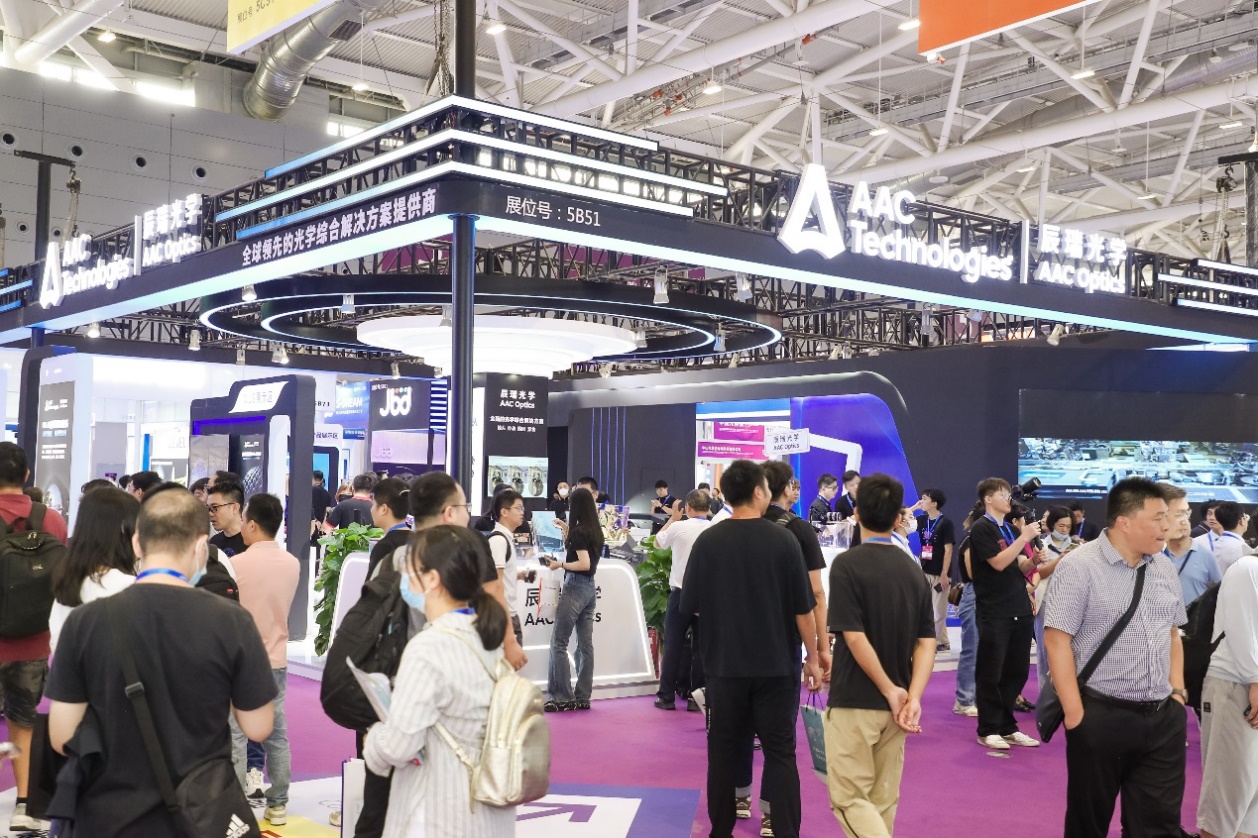
AAC’s proprietary WLG technology applied in many fields to meet the requirements of higher precision
The WLG (wafer-level glass) technology developed in-house by AAC Optics and a variety of WLG glass lenses were exhibited in detail. WLG technology has advantages in mass production feasibility, production efficiency, lens accuracy and performance, and can also achieve better lens design in diameter-thickness ratio and eccentric accuracy. Therefore, it attracted the attention of the media and the audience at the exhibition site.
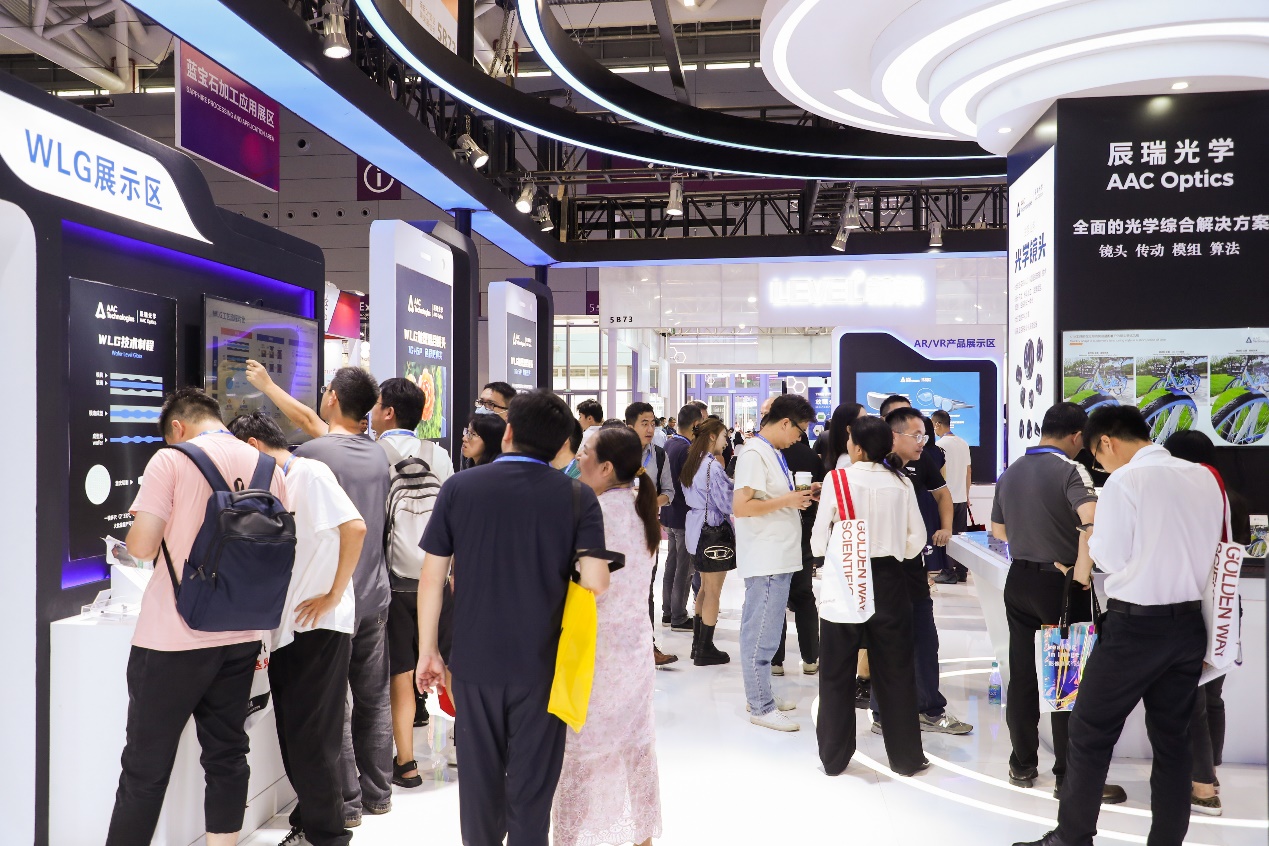
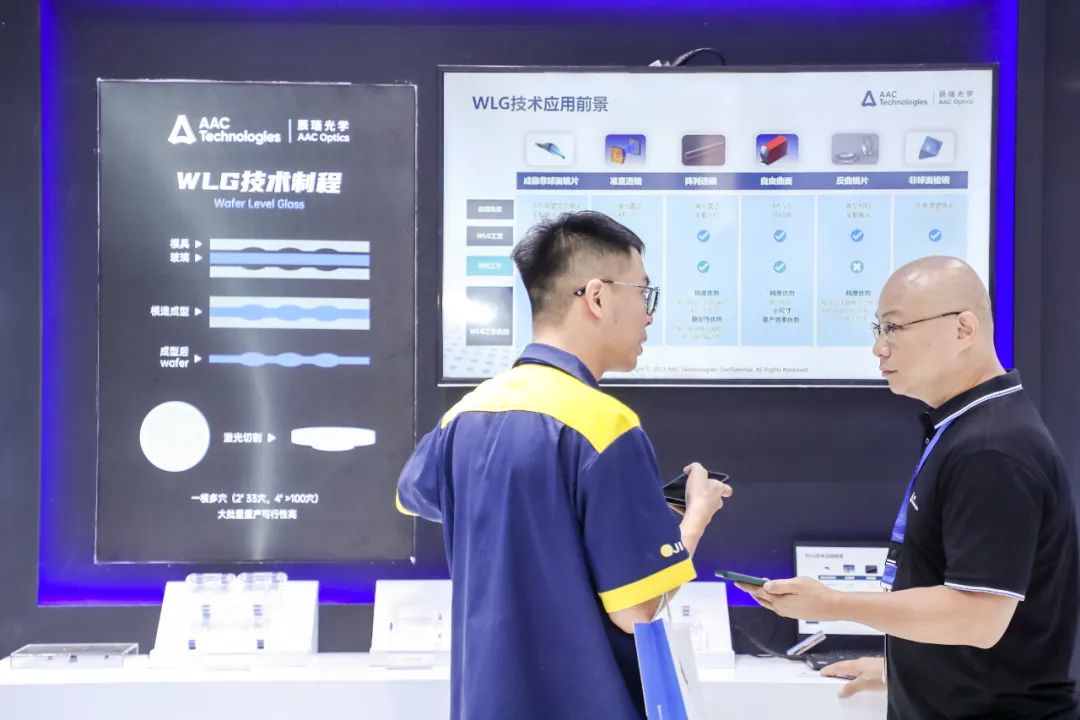
The traditional aspheric prism is composed of an aspheric lens and a prism glued together, while AAC Optics’s aspheric prism that uses WLG technology can be integrally molded with multiple cavities. The array-based production not only has high output efficiency, but can also yield higher configurational freedom. Moreover, it reduces the errors generated in the gluing process to meet the accuracy requirements of high-level lenses.
WLG microlens array lenses and cylindrical lenses are also integrally molded with multiple cavities, achieving better consistency and stability. They also feature high output efficiency, high effective area ratio and high precision.
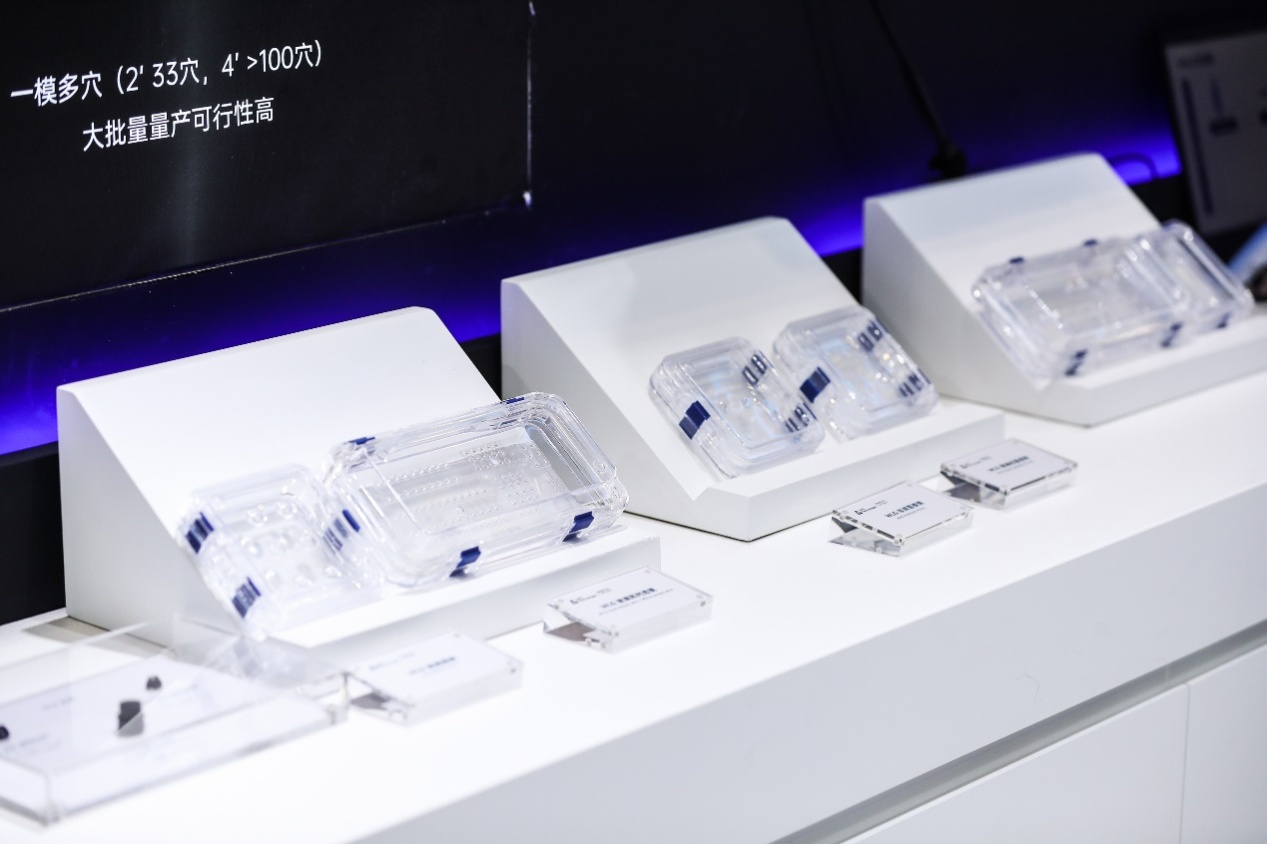
WLG technology can be applied not only to mobile phones, but also to all fields that require glass lenses, such as AR/VR, LiDAR, vehicles, drones, action cameras, biomedicine, and optical communication. In addition, it can be also used to produce a wide range of products covering aspheric lenses, cylindrical lenses, array lenses, free-form lenses and aspheric prisms.
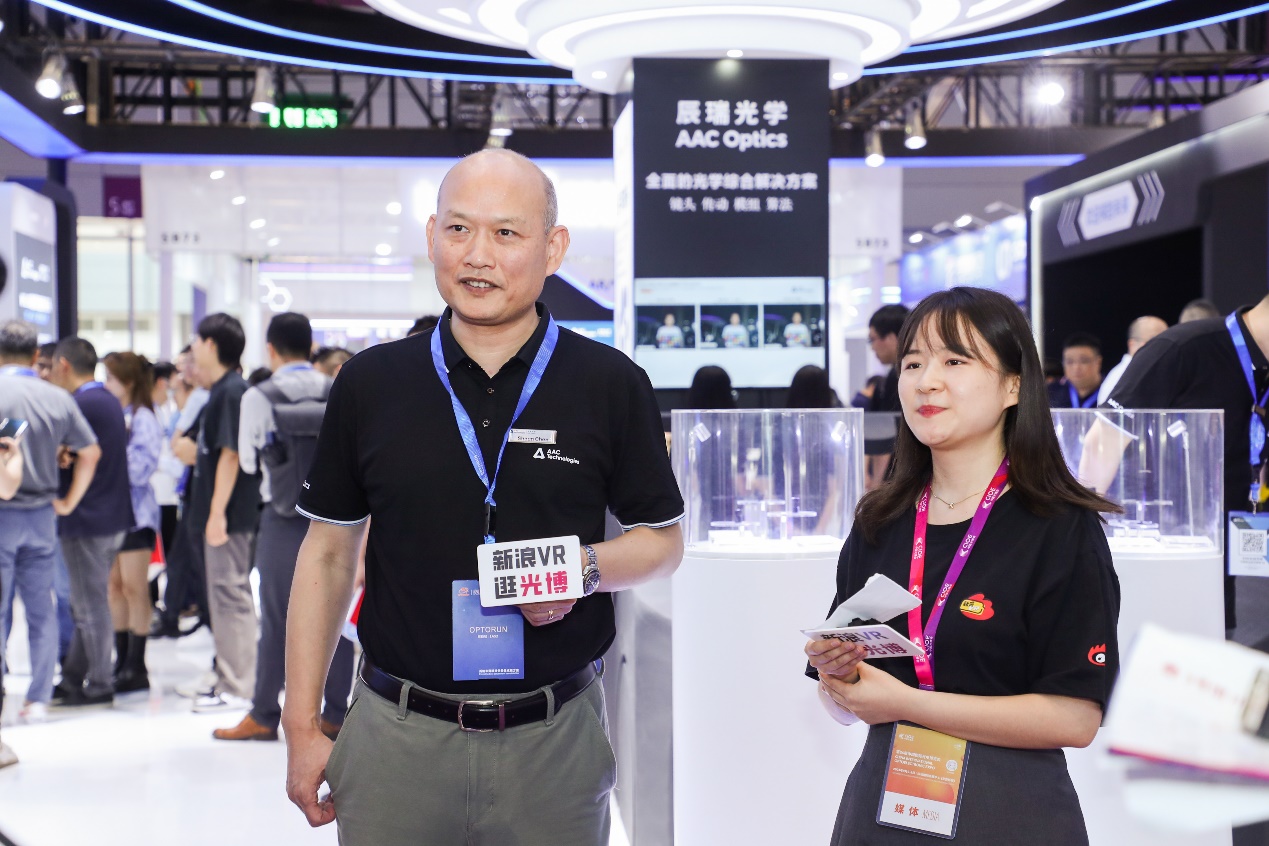
Chen Xunchang, CEO of AAC Optics, stated when communicating with the media that high-end models being equipped with glass-plastic hybrid lenses is a clear trend in the mobile phone lens industry. The WLG technology developed in-house by AAC Optics represents a significant breakthrough compared with the traditional glass manufacturing process. It can provide customers with microglass lenses that feature high precision and high cost performance on a large scale. In order to make valuable design solutions for customers, it is necessary to vertically integrate technology research and development capabilities and fully understand the pain points of end customers.
Vertical integration of lenses, modules, actuators and algorithms to create comprehensive solutions
After more than ten years of commitment to the field of optics, AAC Optics can deeply combine hardware products with software algorithms such as image tuning algorithms, vertically integrate optical lenses, acuators, modules and algorithms, further meet the needs of end customers, and provide full-stack solutions to achieve agile R&D and manufacturing for projects.

At the exhibition site, WLG glass-plastic hybrid lenses and plastic lenses of different specifications were unveiled, covering products with different functional attributes such as main camera lenses, ultra-wide-angle lenses, telephoto lenses, front lenses, fingerprint recognition and TOF lenses. Other products that attracted attention were the 100-megapixel glass-plastic hybrid lenses, 200-megapixel main camera lenses, 100-megapixel ultra-wide-angle lenses and other high-pixel and high-performance lens products, as well as 50-megapixel portrait telephoto lenses and ultra-thin front lens with a total length of only 3.43 mm.
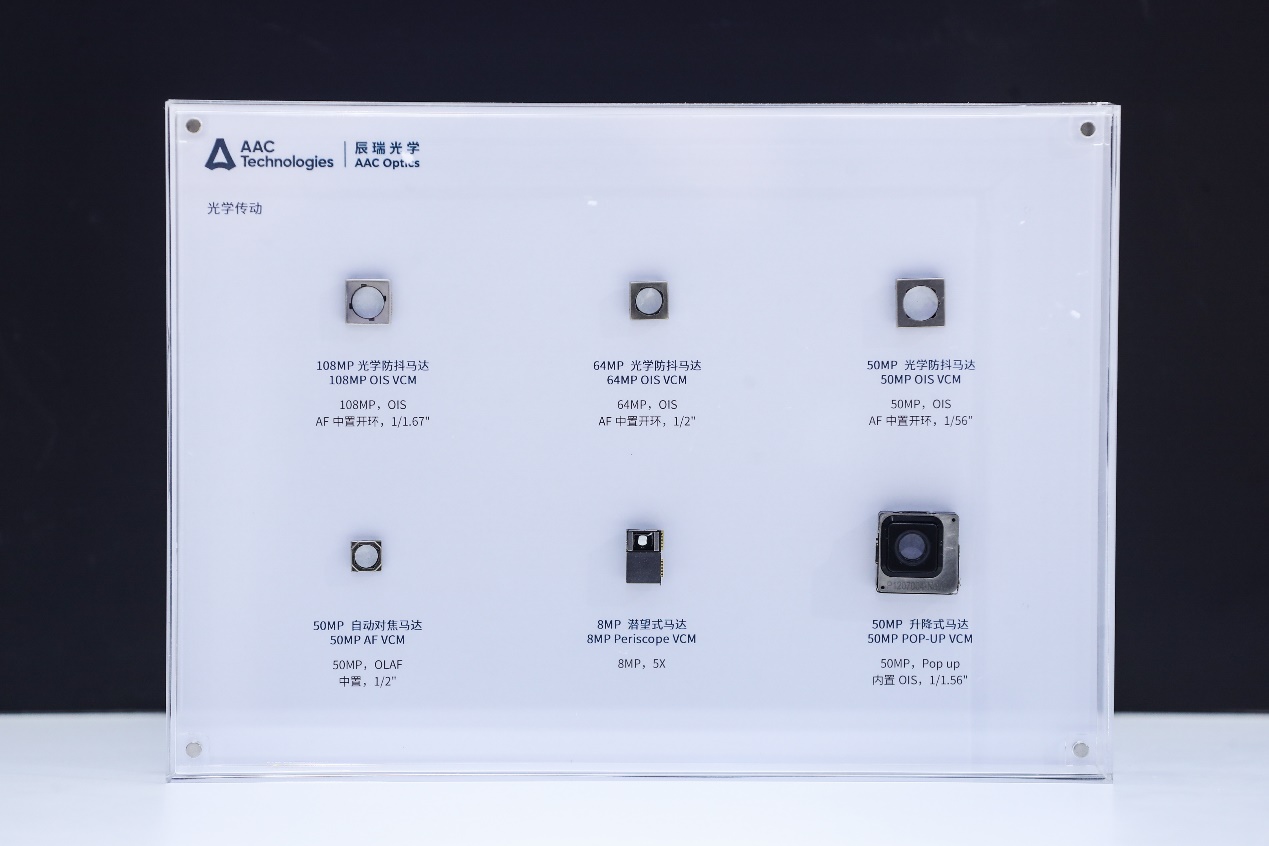
The exhibit also saw the debut of new modules and actuators, such as the 200-megapixel camera module, 64-megapixel OIS module, 108-megapixel optical image stabilization actuators, 50-megapixel optical image stabilization actuators and other products. When it comes to algorithms, AAC’s self-developed AITO can transform most tuning processes that requires repeated manual trial and error into the process of finding a mathematical optimal solution. Therefore, AITO maximizes chip performance and brings a remarkable image quality experience.
Automotive optical solution enabling intelligent vehicles
With cutting-edge optical product development and precision manufacturing capabilities, AAC Optics has applied optical products and solutions to the field of smart vehicles. At the exhibition site, AAC Optics’s product portfolio was unveiled. The products include front-view lenses, surround view lenses, In-cabin lenses and LiDAR receiver lenses.They can systematically support the 360-degree environmental perception of the vehicle and provide accurate raw visual data for devices. Among them, the new 1.2-megapixel surround view lens features a large aperture of f/1.6. The increase in light intake makes it possible to capture clear images in dark environments.
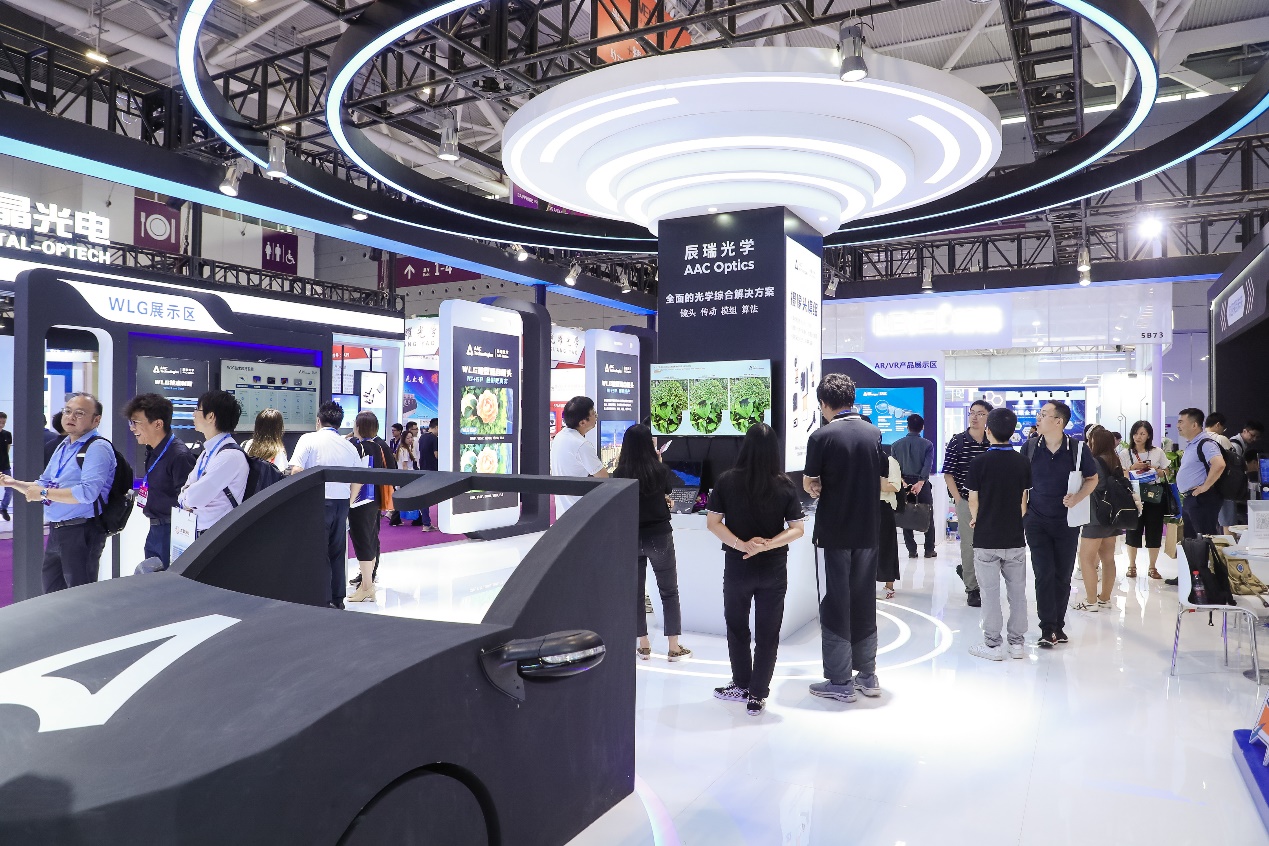
According to the introduction, WLG technology with better parts accuracy and manufacturing stability can improve the accuracy and stability of high-pixel sensory automotive cameras, realize more form factors, and create more possibilities for lens resolution performance. For automotive LiDAR, WLG technology can be used to manufacture aspheric glass with high freedom, higher eccentric and profile accuracy with high efficiency and superior yield to ensure product stability.
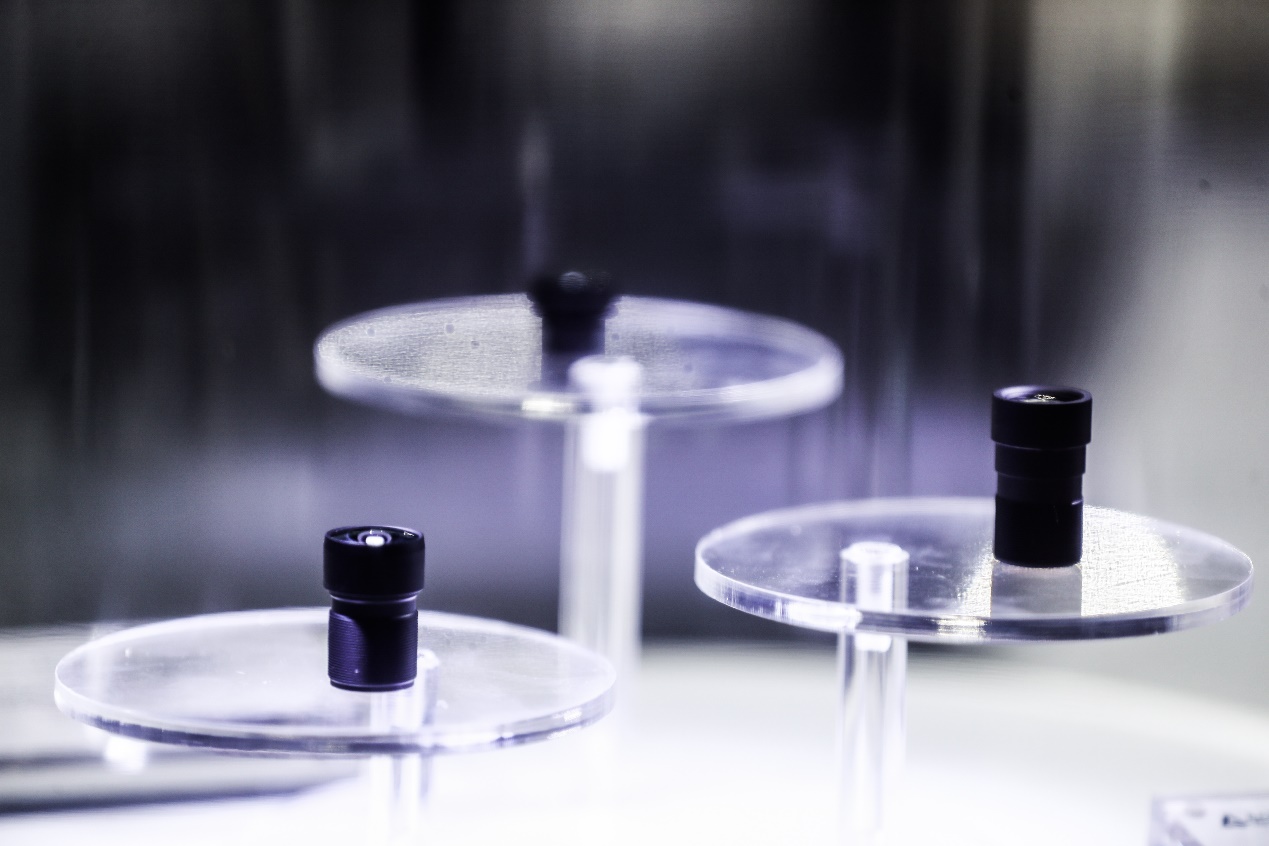
AR/VR optical solutions delivering a more immersive visual experience
In the AR/VR exhibition area, a crowd gathered to experience the demos. Industry partners showed keen interest in high-quality 3P VR Pancake Module, high-cost-performance 2P VR Pancake Module, AR-HUDs, AR optical waveguide lenses, free-form lenses, DLP optical engines and other products and technical solutions.
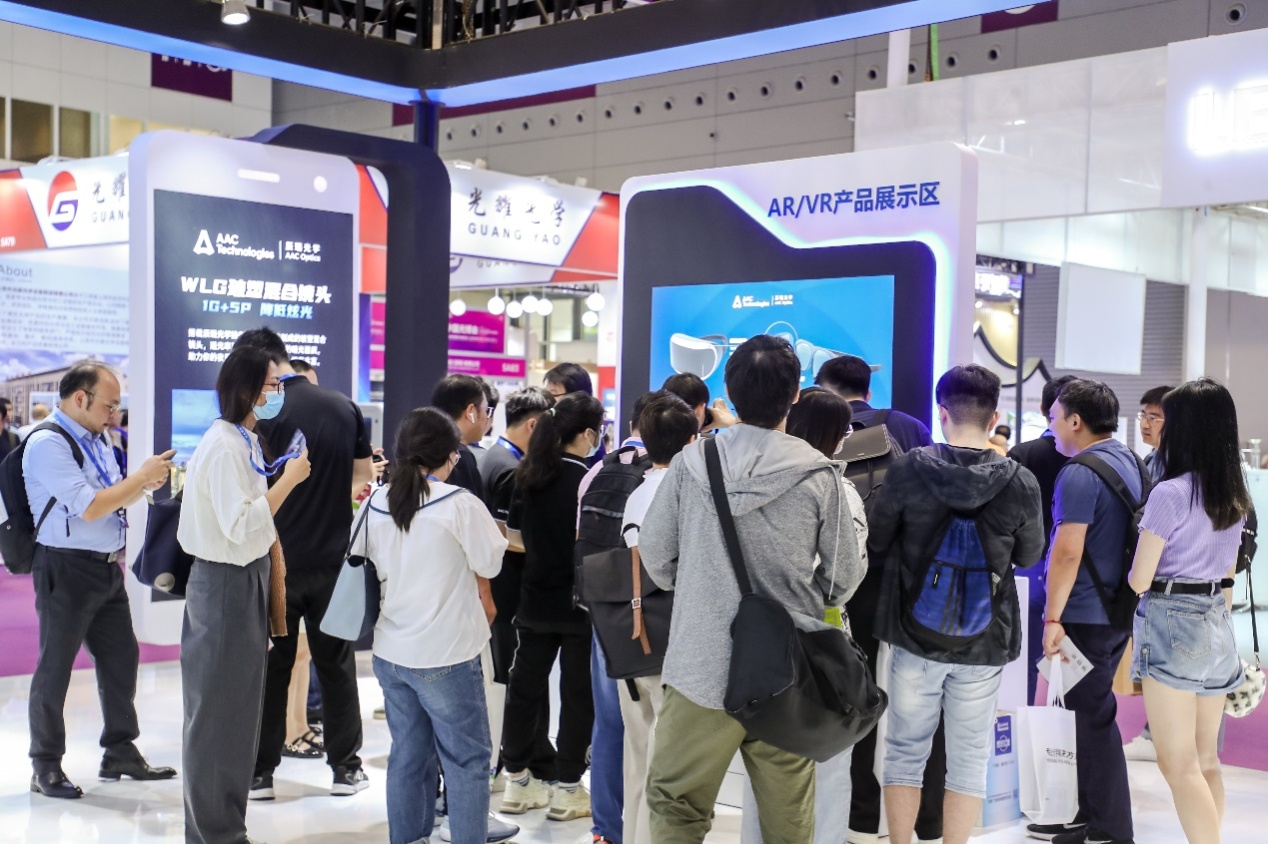
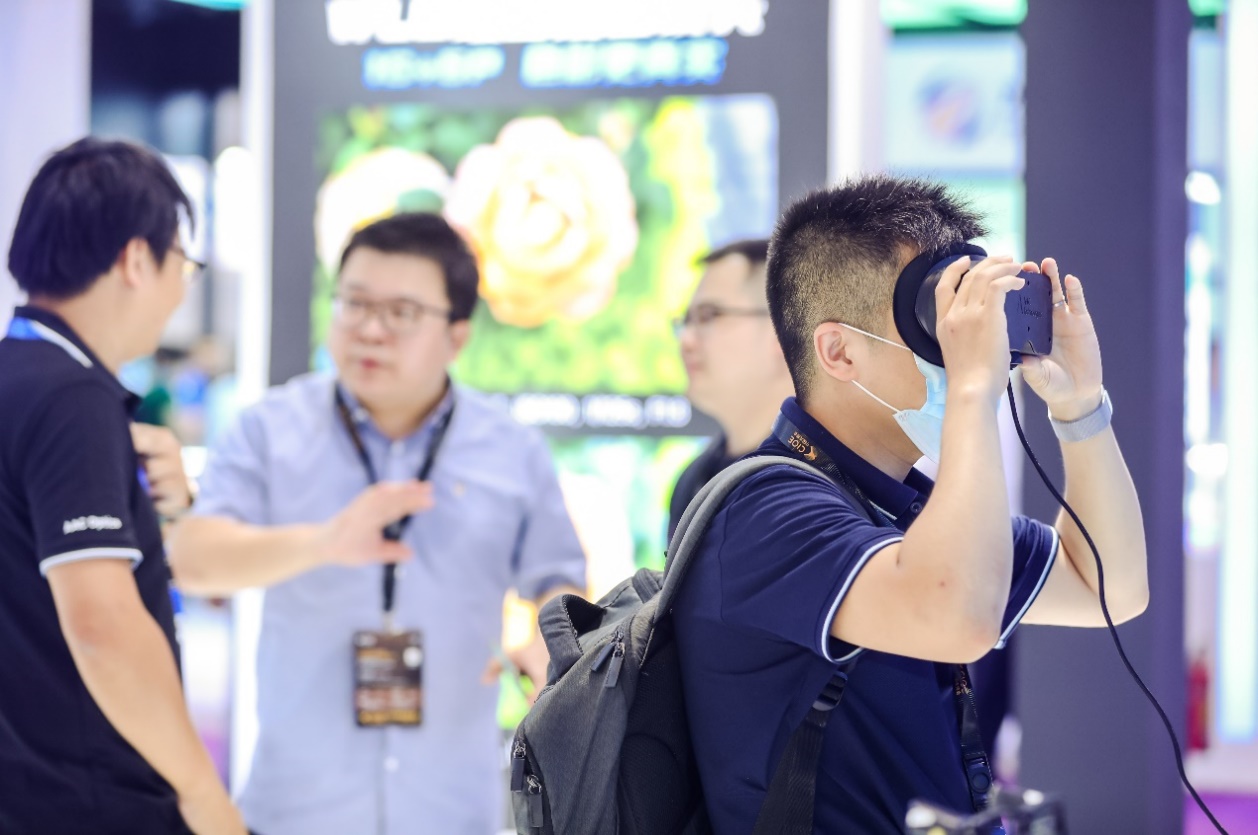
Optical modules are one of the most critical components in VR devices. AAC’s 3P pancake VR optical module excels in the following five aspects: thinness, wide field of view, ghosting control, diopter adjustment and sharpness. At present, it has been mass-produced and successfully applied in mainstream VR products on a large scale. The 2P VR pancake optical engine module has five advantages: large field of view (FOV), large eye box, compatible interpupillary distance (IPD) adjustment, diopter adjustment and high cost performance. The total TTL of the optical lens is reduced to less than 19 mm, further achieving slimmer and more compact VR headsets.
For the interactive experience of AR devices, AAC developed a Single Layer Optical Waveguide Lens in collaboration with Dispelix, an industry-leading optical waveguide manufacturer. The lens has an overall light efficiency of over 310 nits/l m and a high transmittance of 90%. At the same time, the waveguide lens’s thickness and weight have been reduced by more than 50%, making it compatible with a large field of view (FOV) from 30° to 50°..
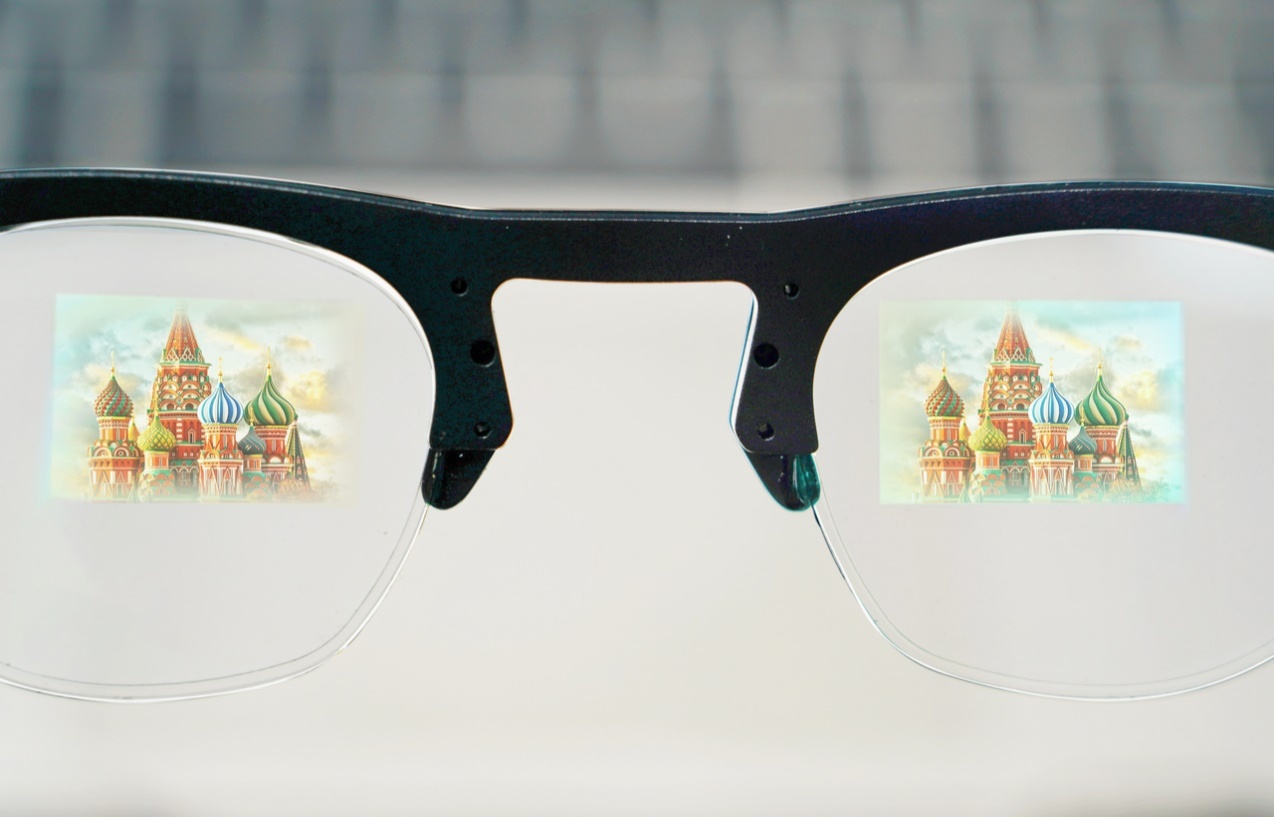
The diffuser jointly developed by AAC and CDA was also exhibited on site. It is suitable for various customized AR-HUD solutions. Additionally, it features high color uniformity and high light efficiency, can provide a deflection angle of up to 15°, and effectively addresses issues like rainbow patterns and graininess. AAC’s self-developed free-form lens features an aperture of more than 300 mm, a PV of less than 60 μm, and a reflectivity of more than 95%, flexibly meeting customers’ customized development requirements. In terms of DLP (digital light processing) optical engines, AAC can also provide a variety of core optical elements such as optomechanical projection lenses, aspheric lenses, synchromatic prisms and fly-eye lenses.
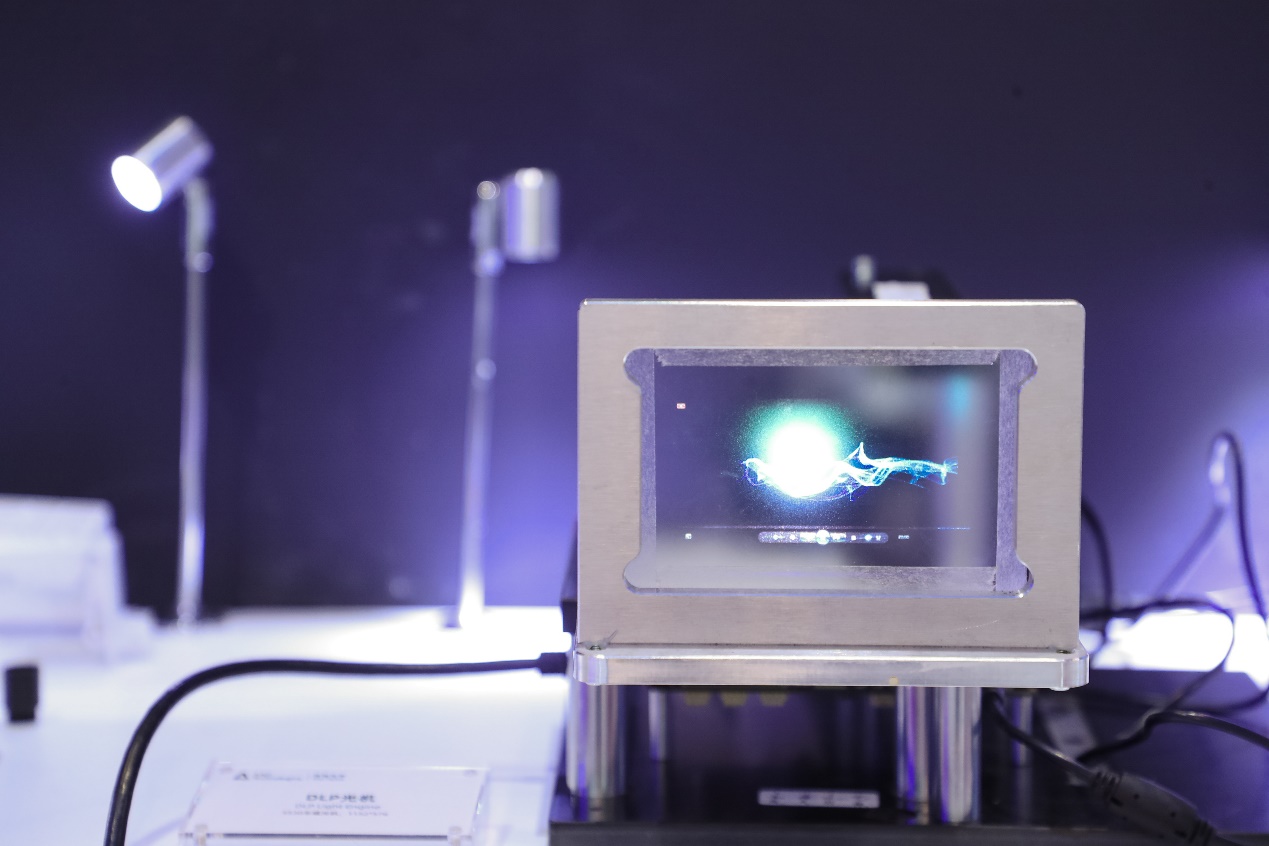
Industry Influencers Deliver Informative Speeches-WLG Opens a New Era of Imaging,Prospects of the Diffraction Optical Waveguide Process Roadmap
Shi Rongbao, Deputy General Manager of AAC Optics BU, delivered a keynote speech titled WLG Opens a New Era of Imaging at the “Forum on Emerging Technologies and Applications of Optical Imaging,” and introduced WLG technology and future product planning in detail from the aspects of process flow, characteristics, application scenarios and advantages.
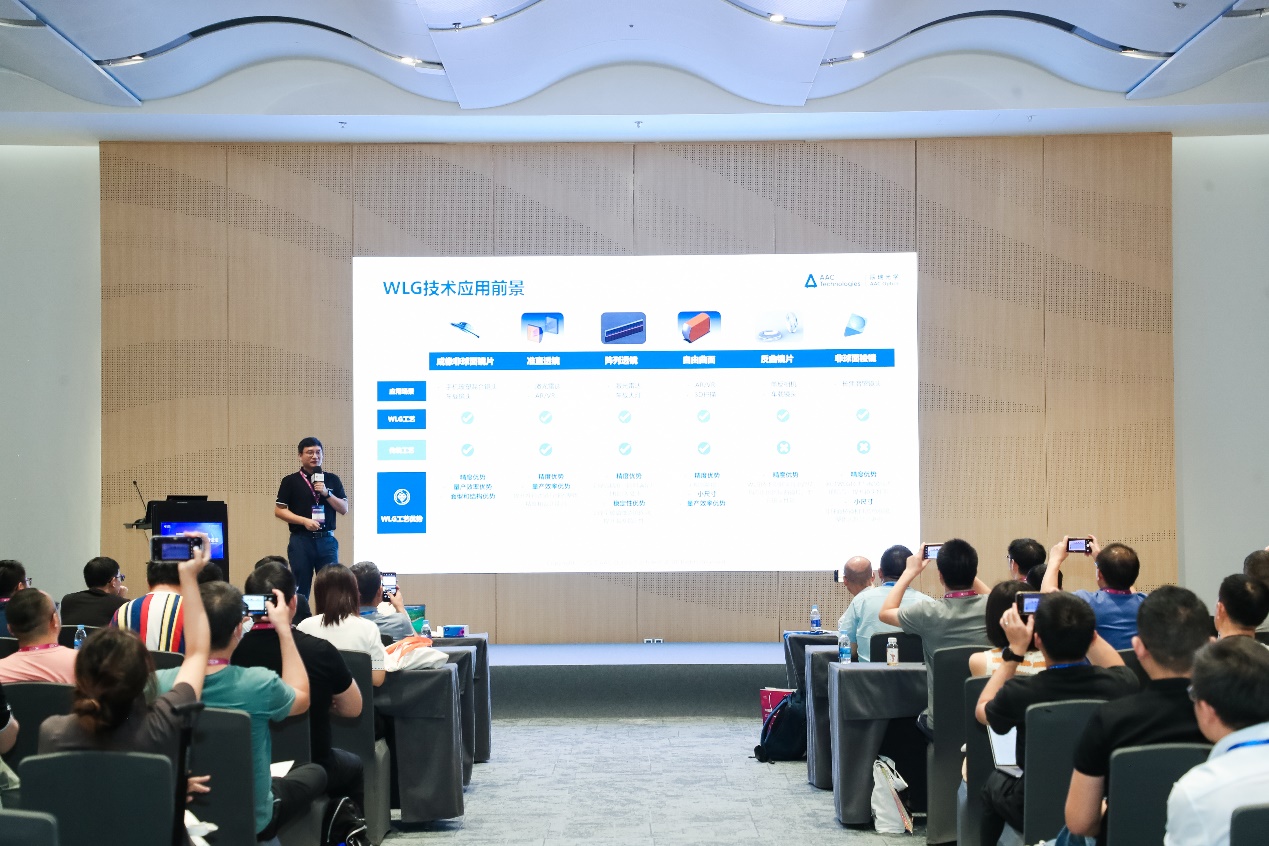
According to Shi Rongbao, the glass-plastic hybrid lens based on WLG glass lens features superior optical performance and high precision of the glass with low dispersion. It can improve imaging performance, expand the imaging range, optimize and enrich the structure of optical systems, and maximally accommodate and adapt to a variety of high-performance lens design requirements. Nowadays, WLG glass lenses have been mass-produced and applied in consumer electronics fields such as mobile phones. In the future, its application will expand to more fields, including AR/VR, LiDAR, vehicles, drones and action cameras.
At the 4th China AR Technology Application Summit Forum in 2023, Tao Hongyan, Vice President of AAC’s Marketing Department and General Manager of XR, delivered a keynote speech titled Prospects of the Diffraction Optical Waveguide Process Roadmap. AAC teamed up with Dispelix to provide the industry with a complete etched grating solution from design to production, and to support the customized design and development of optical waveguides according to customer needs. AAC’s R&D engineering team also provided full-stack processing and test solutions for customized products.
Tao Hongyan said in his speech: “AAC always insists on innovation-driven development and uses technology to deliver users a pleasant experience. AAC has innovative XR solutions and service capabilities represented by full-stack optical waveguide solutions. We can flexibly meet the diversified needs of customers and help promote the development of the entire XR industry.”
